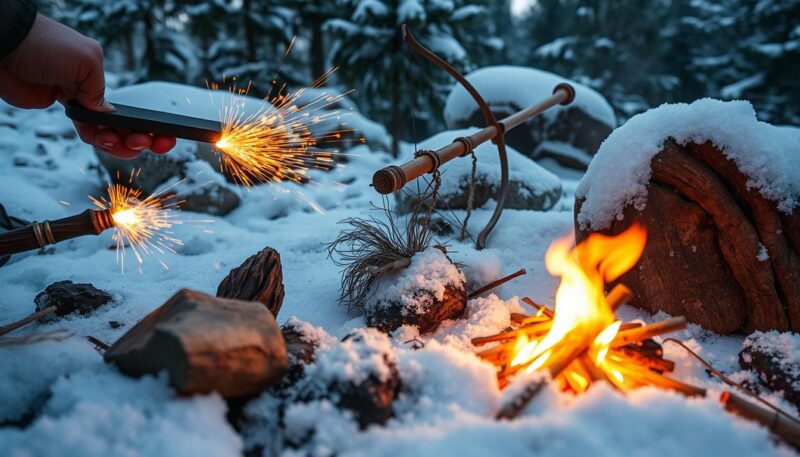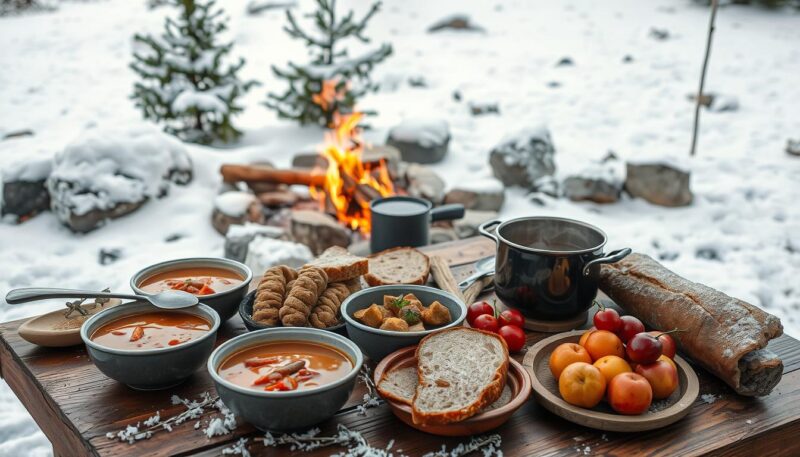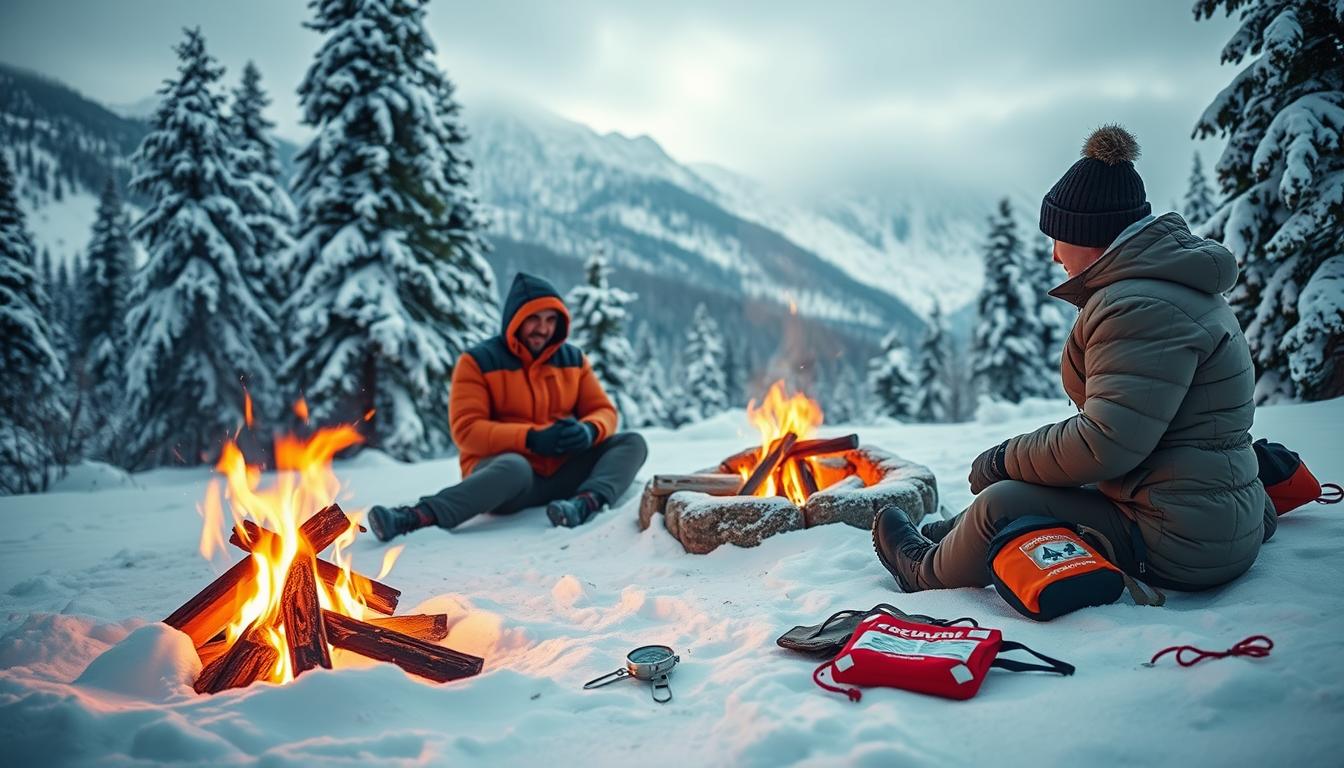Winter can be a beautiful yet dangerous season, especially when temperatures plummet to below zero, as they often do in the Northeast. Each year, around 1,300 deaths in the United States are linked to exposure to cold temperatures, underscoring the importance of effective cold weather survival strategies. Understanding how to stay warm in extreme temperatures is key to navigating winter’s challenges safely and comfortably.
When venturing outdoors in frigid conditions, dressing in multiple layers and having the right gear can make all the difference. Thermal underwear, made from materials like Polartec Power Stretch, can serve as a great base layer. Pair this with a quality down jacket or parka—often referred to fondly as the ‘Big Puff’—to provide an insulating barrier against the cold. Such jackets, though an investment, can last for decades with proper care.
Although staying warm is critical, staying dry is equally important for cold weather survival. Wet clothing loses its insulating properties, increasing the risk of hypothermia, which can occur when the body’s core temperature drops below 95°F. Windproof and waterproof outer layers are essential in preventing moisture penetration, ensuring that you stay comfortably dry.
Proper accessories are just as vital; fleece-lined wool hats or their windproof versions can trap body heat, while mittens offer better warmth retention than gloves in extremely cold climates. Insulated footwear is a must, with brands like Smartwool and Darn Tough providing popular choices for socks that keep feet warm.
In addition to the right clothing, having the skills to build a fire and create an emergency shelter can significantly increase your chances of surviving in the wilderness during a winter storm. Furthermore, knowing how to identify the early signs of frostbite and hypothermia and taking immediate action can save lives. Frostbite, characterized by numbness and waxy skin, can set in quickly—sometimes in as little as 30 minutes in temperatures below 32°F.
These winter survival tips are not just for outdoor enthusiasts. Homeowners should be prepared for potential power outages, which can increase by 50% during heavy snow and ice storms. Keeping generators at least 20 feet away from windows and doors is crucial to prevent carbon monoxide poisoning, a risk significantly heightened during winter storms.
Whether you are planning an outdoor adventure or simply want to stay safe during extreme cold spells, understanding and implementing these essential tips can greatly improve your cold weather survival skills. Remember, preparation is key to staying warm and safe when temperatures drop.
Essential Cold Weather Gear
When braving the winter elements, having the right cold weather gear is paramount to ensure safety and comfort. From head to toe, each piece of winter clothing essentials plays a significant role in protection against the harsh cold.
Layering Techniques
Mastering layering techniques is crucial for optimal warmth. Start with a snug base layer made from materials like Thinsulate or Primaloft, which offer excellent thermal insulation. Follow this with an insulation layer that retains body heat. Finally, top it off with a windproof outer layer to shield against the elements. Brands like Patagonia and The North Face offer high-quality layers that align with these principles.
Proper Gloves, Mittens, Hats, and Footwear
Your extremities are most vulnerable in cold weather. Insulated gloves and waterproof mittens are non-negotiable, as they prevent heat loss and protect against frostbite. The same applies to thermal hats that cover your cheeks and ears. For footwear, heavy-duty boots like the Kenetrek Mountain Extreme 400 with full-grain leather not only offer resilience but also ease of treatment. Pair these with winter-weight socks such as Smartwool or Darn Tough to maintain circulation and warmth.
Importance of Staying Dry
Staying dry is fundamental in preventing hypothermia. Invest in moisture-wicking fabrics that keep sweat away from your skin and layers that offer waterproof protection. Applying waterproofing treatments like SNO SEAL to boots ensures that your feet stay dry, which is vital for warmth and comfort. Remember, managing moisture effectively through quality cold weather gear not only enhances thermal insulation but also increases your survival chances in extreme situations.
Cold Weather Survival Skills
Cold weather survival skills are crucial for anyone venturing into freezing environments. Key skills include building a fire for warmth and creating emergency shelters. Mastering these techniques can significantly enhance your chances of staying safe and warm in cold conditions.
Building a Fire for Warmth
Building a fire for warmth is one of the fundamental survival skills in the cold. Utilizing effective fire-starting methods can make a critical difference, as a fire not only provides warmth but also can be used for signaling help. Identifying dry materials such as wood and kindling is essential. Here are some methods:
- Using a fire starter or waterproof matches
- Collecting dry wood, bark, and kindling
- Constructing a fire lay using the teepee, lean-to, or log cabin methods
Placement of the fire is equally important. Choose a sheltered location, protected from the wind, to ensure your fire can sustain for a long duration.

Creating an Emergency Shelter
Alongside fire-building, creating an emergency shelter is another essential survival skill in the cold. An effective shelter can protect you from wind chill, conserve body heat, and provide a secure resting area. Utilizing natural materials such as leaves, branches, and snow, or supplementing with items from your winter survival kit, can enable you to construct a solid shelter. Consider these strategies:
- Building a snow cave or trench shelter
- Using tree boughs and leaves to create a windbreak
- Employing a tarp or mylar blanket for added insulation
Avoiding wind exposure is critical. Seeking shelter below tree lines and using trees to gather firewood can enhance your chances of survival. It’s also beneficial to keep your shelter well-ventilated to prevent moisture buildup, ensuring it remains a dry and effective refuge.
Food and Hydration for Winter Survival
Ensuring proper nutrition and hydration is key for survival during harsh winter conditions. Understanding what foods to stock up on and how to stay hydrated can make a significant difference.
Winter Survival Food Preparation
In winter conditions, calorie intake in cold weather needs to be significantly higher—up to 7,000 calories daily compared to the average American diet of 2,000-2,500 calories. High-fat foods are essential as fats contain twice as many calories per gram compared to carbohydrates or proteins. Low-salt, high-fat nuts like cashews and macadamia nuts are excellent choices. Additionally, traditional survival food like pemmican, which is rich in rendered fat, dried fruit, and ground dried meat, can provide much-needed calories.

Incorporating coconut oil into morning coffee along with cocoa can offer both fast and slow-burning nutrition. Soups with heavy cream are ideal as they not only provide instant warmth but also help keep fats from solidifying. For a higher-calorie trail mix, include reduced salt cashews, dried cranberries, and coconut flakes.
Here’s a quick list of essential winter survival foods:
- High-fat nuts (cashews, macadamia nuts)
- Pemmican
- Coconut oil and cocoa mix
- Heavy cream-based soups
- Trail mix with added fats (coconut flakes)
Importance of Staying Hydrated
Staying hydrated in the cold is crucial, as the dry winter air can lead to quicker dehydration. In winter survival situations, obtaining adequate hydration can often be more challenging than maintaining calorie intake in cold weather. Dehydration can cause serious health issues, so it’s important to monitor urine clarity and maintain clear urine as a health indicator.
Keeping water from freezing is essential. Using an immersion heater or carrying a case of water bottles in your vehicle can prevent total freeze. Melting snow for drinking water is common, but using clean snow and employing the t-shirt or plastic bag method with a collection container can be effective. The Sawyer Mini Water Filter is a reliable tool, capable of filtering thousands of gallons before needing replacement, which is essential for long-term usability.
To conclude, a balanced approach to calorie intake in cold weather and staying hydrated in the cold can significantly enhance your winter survival chances.
Recognizing and Preventing Cold Weather Health Risks
Understanding cold weather health risks is essential for staying safe during winter months. Recognizing the signs of frostbite and hypothermia, as well as taking preventative measures, can protect you from severe cold-related injuries.
Frostbite Prevention
Frostbite can occur rapidly in extreme cold. Covering all extremities with appropriate clothing and gear is crucial for frostbite prevention. Key preventative measures include wearing layers, insulated gloves, and thermal socks. Nicotine and alcohol can impair blood flow, increasing the risk of frostbite, so it’s best to avoid them. According to the U.S. Armed Forces Cold Weather Injury Report, there were 264 Army cold-weather injuries reported in fiscal year 2024, emphasizing the importance of proper gear and awareness.
Hypothermia Symptoms and Treatment
Hypothermia is a serious condition that occurs when your body temperature drops below 95 degrees Fahrenheit. Key hypothermia symptoms include shivering, exhaustion, confusion, and slurred speech—these require immediate medical attention. Prior cold-weather injuries and certain medical conditions such as anemia and diabetes can increase vulnerability to hypothermia. To treat hypothermia, you must gradually warm the individual with blankets and seek medical help promptly.
| Health Risk | Symptoms | Prevention | Treatment |
|---|---|---|---|
| Frostbite | Red, white, or grayish-yellow skin; numbness | Appropriate clothing, avoid nicotine/alcohol | Gradual warming, avoid rubbing affected area |
| Hypothermia | Shivering, exhaustion, confusion, slurred speech | Proper layering, staying dry, avoid prolonged exposure | Gradual re-warming, medical attention |
To stay safe in cold weather, always be vigilant of your symptoms and opt for quality gear designed to mitigate heat loss. With these measures, you can significantly reduce the cold weather health risks and enjoy a safer winter.
Staying Safe in Extreme Conditions
Staying safe in extreme conditions requires being well-informed about the weather and adequately prepared with appropriate winter survival kits. In areas like the southern U.S., near-freezing temperatures can pose significant risks, especially to infants and the elderly. Exposure to extreme cold can result in frostbite and hypothermia, conditions that can become life-threatening.
It’s essential to have ample snow safety tips in mind and to prepare your home and vehicle for harsh winter conditions. Ensure your winter survival kits include items like warm clothes, blankets, flashlights with extra batteries, and energy bars. Carrying a charged cell phone and notifying others of your travel plans can greatly enhance safety during cold weather.
In cold climates, the risk of frostbite increases significantly, especially with a wind chill of -20°F, which can cause frostbite within just 30 minutes. Hypothermia, which occurs when body temperature drops below 95°F, can lead to persistent health issues affecting vital organs such as the kidneys, liver, and pancreas. To avoid these health risks, dress in several layers of loose-fitting clothing and use materials like wool, silk, or polypropylene that retain body heat more effectively than cotton.
Using portable heaters safely is crucial during power outages. Always keep space heaters at least three feet away from flammable materials to prevent fire hazards. For indoor heating, it’s important to have battery-operated carbon monoxide detectors installed and tested monthly. The American Red Cross advises against using gas-powered generators indoors due to the high risk of carbon monoxide poisoning.
Proper vehicle preparation is equally vital. Maintain a full gas tank to prevent fuel line freezing and include a winter survival kit in your car, equipped with warm clothes, a shovel, and other essential items. By incorporating these snow safety tips and focusing on staying safe in extreme temperatures, you can better protect yourself and your loved ones from the dangers associated with severe winter weather.
Conclusion
Mastering cold weather survival involves more than just braving the elements; it’s about being fully prepared to face the unique challenges winter can bring. From equipping yourself with the right gear to understanding the importance of food and hydration, every detail counts when it comes to ensuring your safety in the cold. Dressing in layers, utilizing moisture-wicking fabrics, and wearing insulated gloves, boots, and hats are essential tips for staying safe in the cold. Remember, even a small oversight can lead to severe consequences such as frostbite or hypothermia.
Recognizing cold weather health risks is crucial for survival. Frostbite primarily targets exposed body parts like the head, neck, hands, and feet, which highlights the importance of appropriate attire. Hypothermia, a medical emergency, can occur when your core body temperature drops below 95 degrees Fahrenheit. Symptoms like confusion, slurred speech, and memory loss should never be ignored. With statistics showing that approximately 1,300 US deaths annually result from exposure to natural cold, these aren’t concerns to take lightly.
Preparation also extends to your diet and physical activity. Non-perishable food items rich in simple sugars and root vegetables are vital for maintaining energy levels and body temperature. Staying hydrated is equally important, as cold, dry air can lead to dehydration. Light exercise can help maintain blood circulation and heart rate, reducing the risk of cold-related complications. With these essential tips for staying safe in the cold, you can transform potentially perilous winter conditions into a manageable challenge, ensuring not only your survival but also your comfort and well-being.

